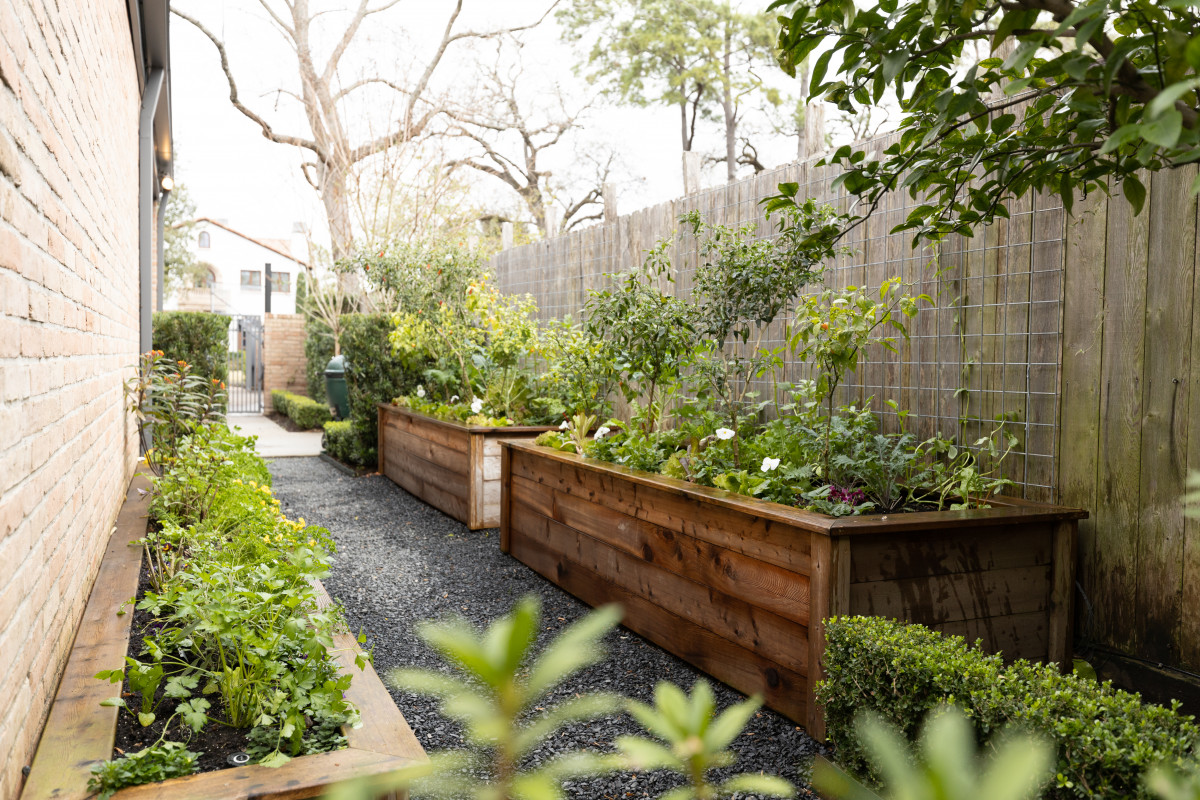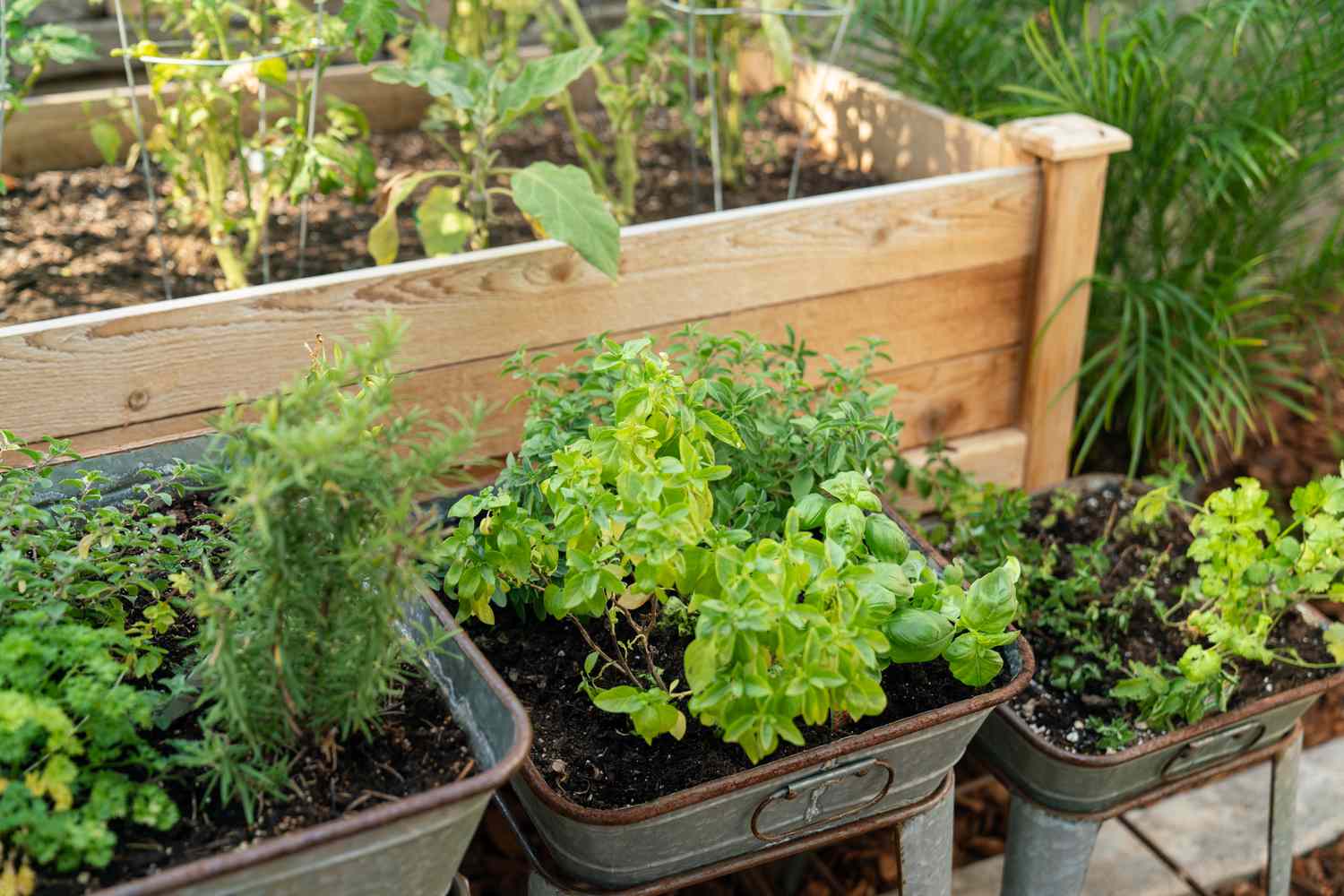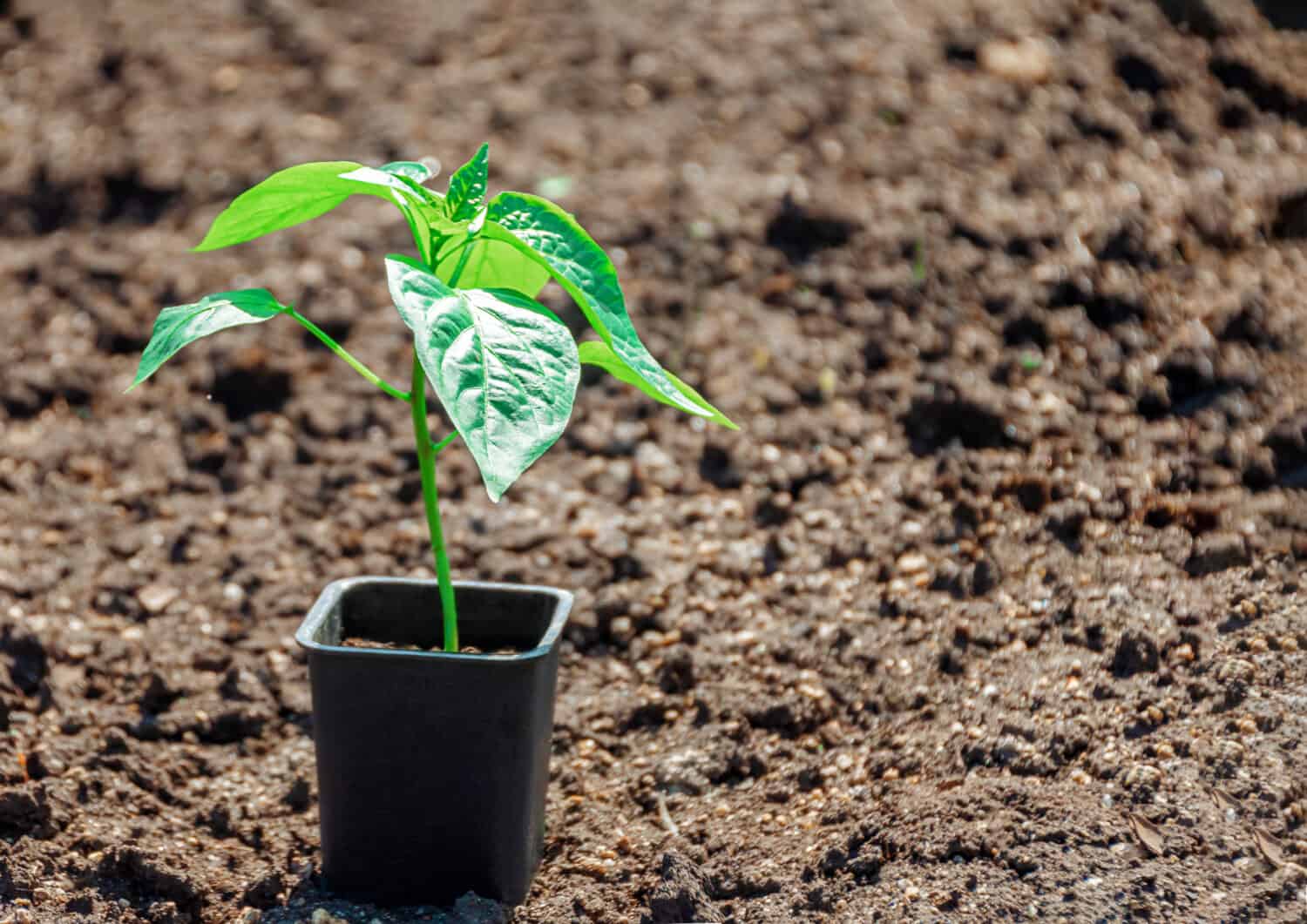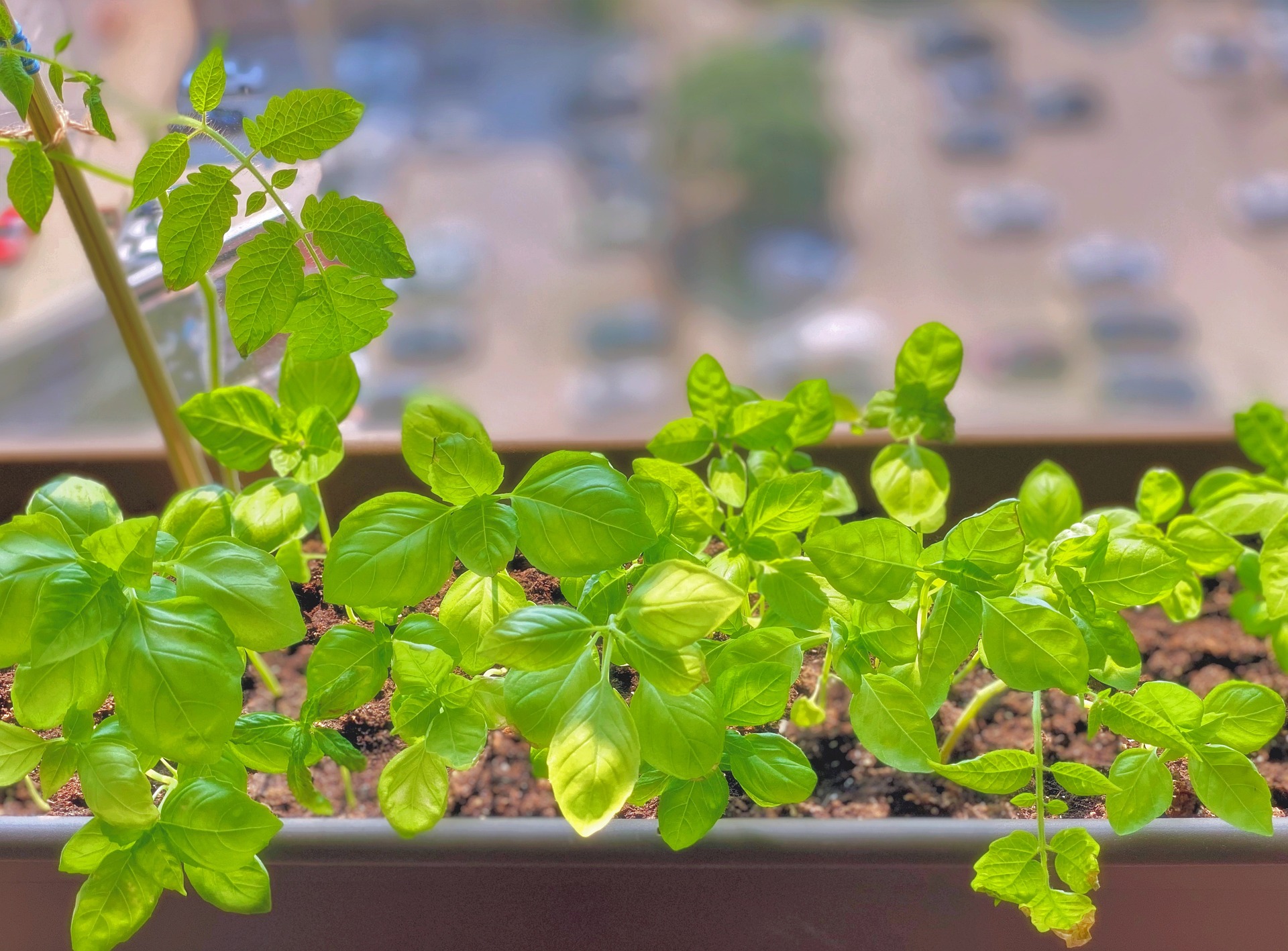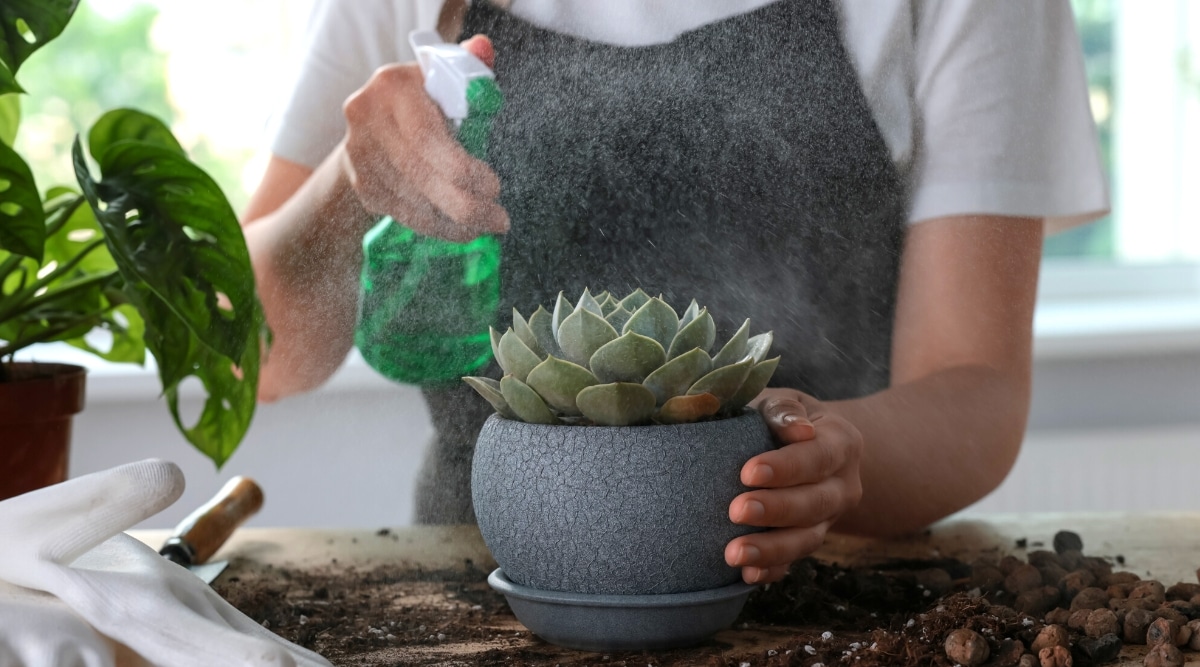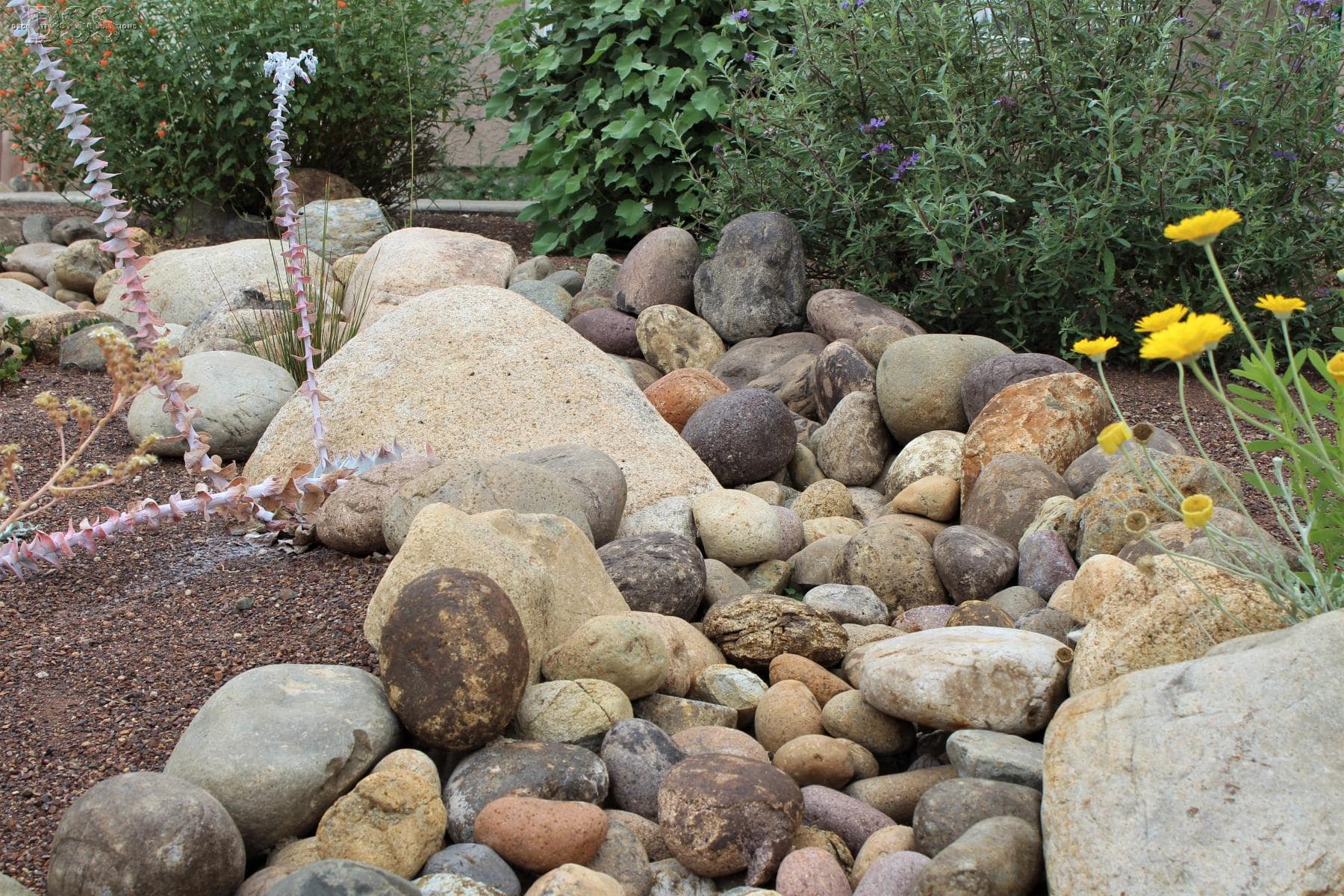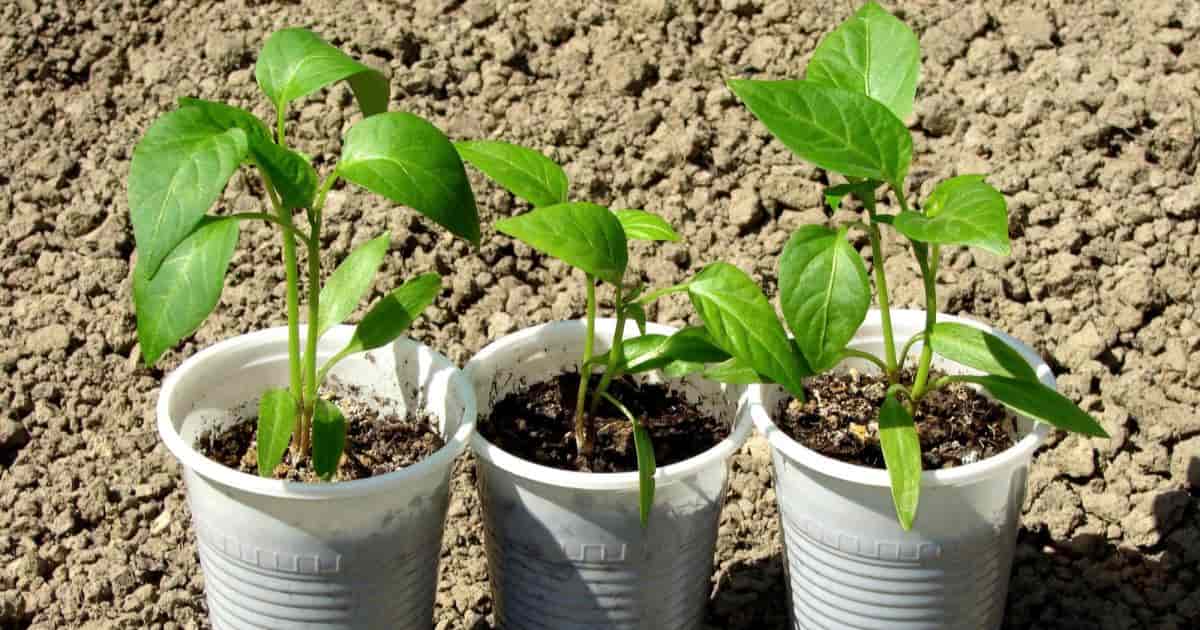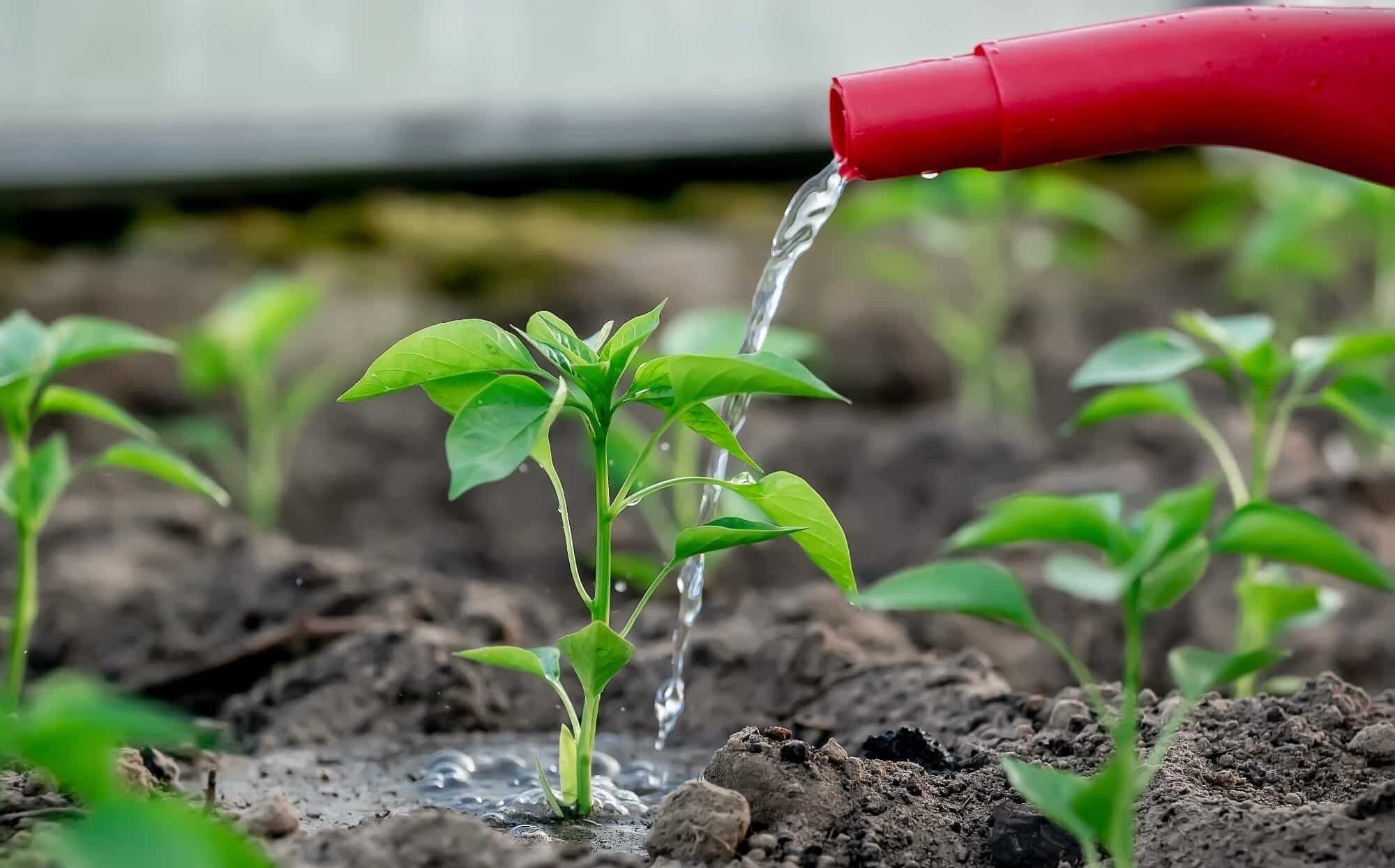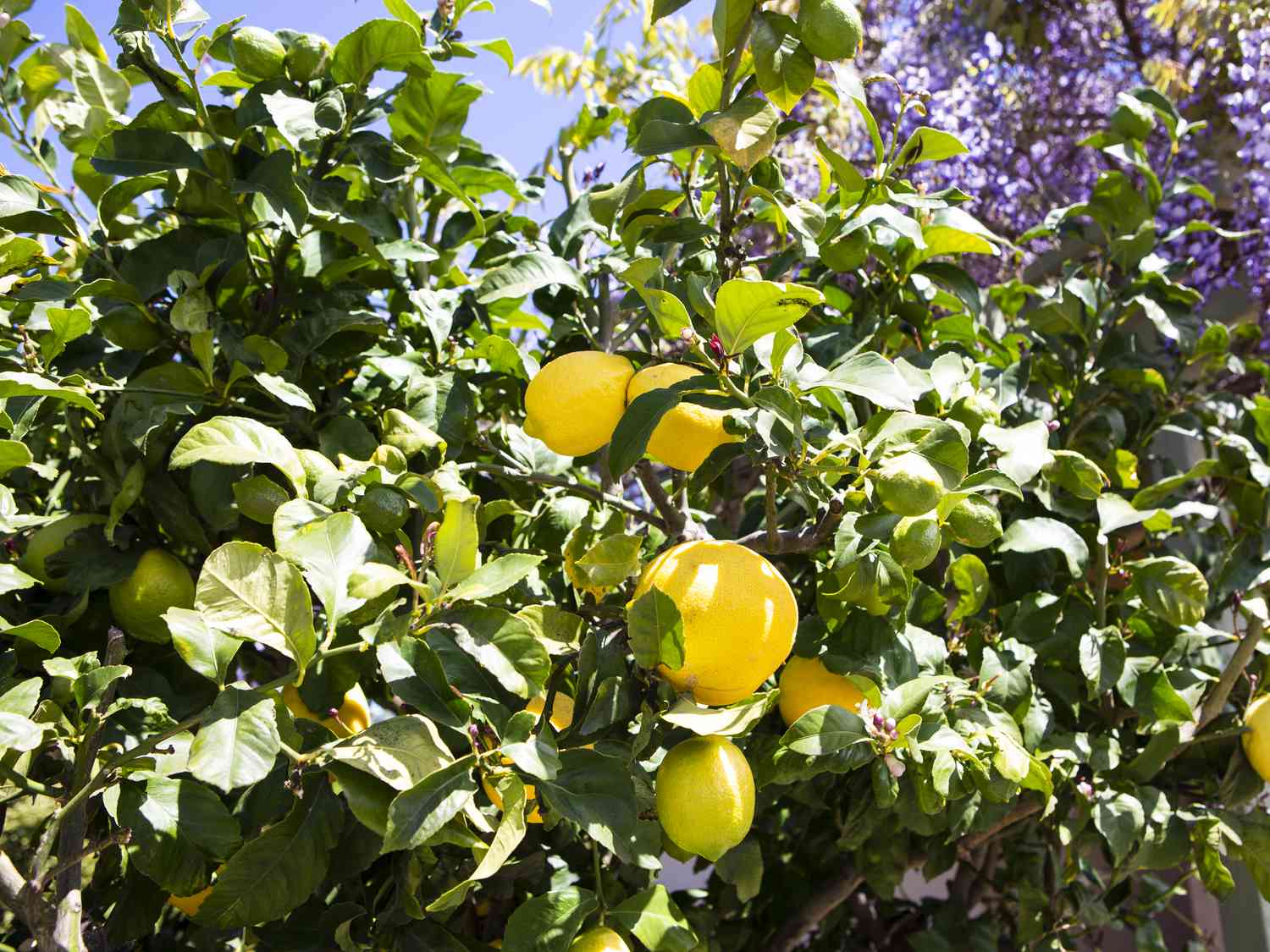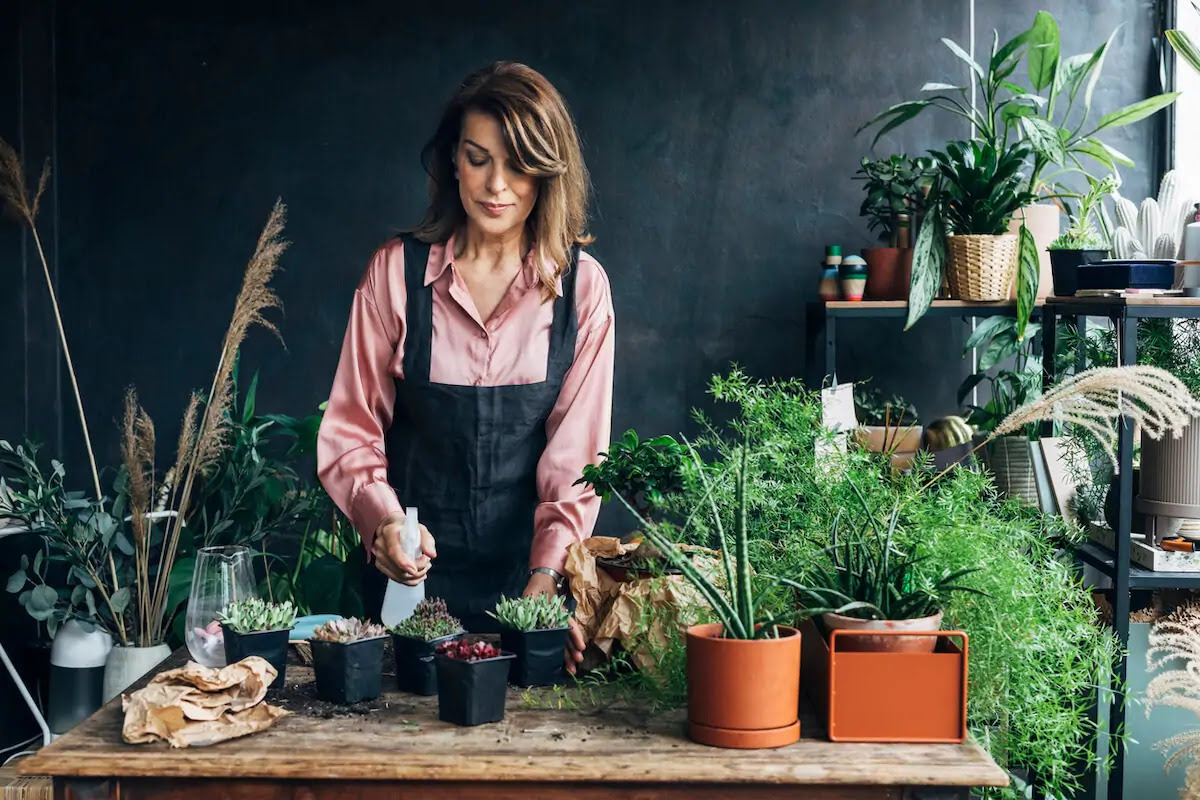Home>Types of Gardening>Edible Gardening>How Much Light Do Pepper Seedlings Need
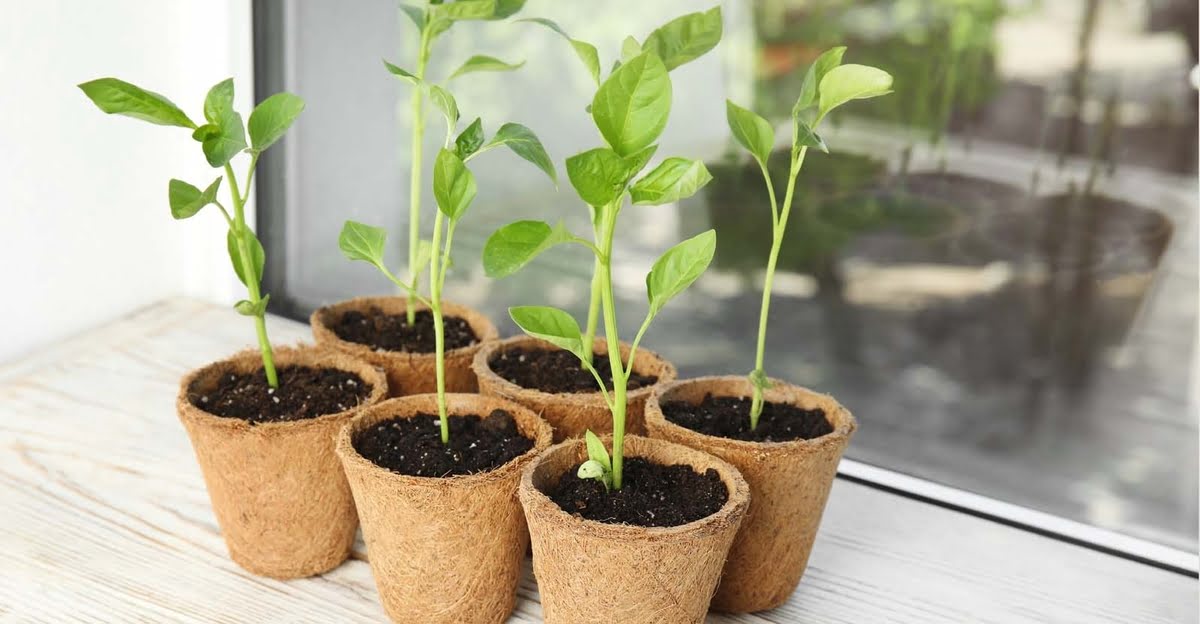

Edible Gardening
How Much Light Do Pepper Seedlings Need
Published: January 1, 2024
Learn how much light pepper seedlings need for successful edible gardening. Find out the optimal conditions for growing healthy pepper plants.
(Many of the links in this article redirect to a specific reviewed product. Your purchase of these products through affiliate links helps to generate commission for Chicagolandgardening.com, at no extra cost. Learn more)
Table of Contents
- Introduction
- Importance of Light for Pepper Seedlings
- Light requirements for pepper seedlings
- Understanding the Light Spectrum
- Determining the Right Duration of Light Exposure
- Choosing the Right Light Source for Pepper Seedlings
- Tips for Providing Adequate Light to Pepper Seedlings
- Common Mistakes to Avoid When Providing Light to Pepper Seedlings
- Conclusion
Introduction
Welcome to the exciting world of edible gardening! There’s something incredibly satisfying about growing your own food, and one of the most popular plants to start with is peppers. Whether you opt for sweet bell peppers or spicy chili peppers, these vibrant and flavorful fruits can add a touch of pizazz to your culinary creations.
However, successfully growing pepper seedlings requires more than just water and soil. One crucial factor that can make or break your gardening efforts is light. Light plays a fundamental role in the growth and development of plants, and pepper seedlings are no exception. Understanding the specific light requirements of these young plants is essential for ensuring their healthy and vigorous growth.
So, in this article, we will delve into the importance of light for pepper seedlings and explore their specific light requirements. We will also discuss the different types of light sources available and provide valuable tips to help you provide adequate light to your pepper seedlings. By the end of this article, you’ll have all the knowledge you need to give your pepper seedlings the best chance at thriving and producing an abundance of delicious peppers.
Importance of Light for Pepper Seedlings
Light is an essential component of the photosynthesis process, which is vital for the growth and survival of plants. For pepper seedlings, providing adequate light is crucial during the early stages of their development. Here are some key reasons why light is so important for pepper seedlings:
- Energy production: Light is the primary source of energy for plants. Through photosynthesis, plants convert light energy into chemical energy, which fuels their growth and development. Without sufficient light, pepper seedlings may struggle to produce the energy they need to grow, resulting in weak and stunted plants.
- Stem and leaf development: Proper exposure to light is essential for the development of strong and healthy stems and leaves in pepper seedlings. Insufficient light can lead to leggy and elongated stems, as the seedlings stretch in search of light. This weakens the structure of the plants and makes them more prone to breakage.
- Chlorophyll production: Chlorophyll is the pigment responsible for the green color in plants, and it plays a crucial role in photosynthesis. Adequate light is necessary for the production of chlorophyll in pepper seedlings, as it enables them to effectively capture and convert light energy into carbohydrates. Without enough light, the production of chlorophyll is limited, compromising the overall health and vitality of the seedlings.
- Root development: While light primarily fuels above-ground growth, it also affects the development of the root system in pepper seedlings. Light regulates the production of hormones that influence root growth and branching. Insufficient light can result in underdeveloped or poorly functioning roots, leading to an overall weaker and less resilient plant.
As you can see, light plays a critical role in the growth and development of pepper seedlings. Providing them with the right amount and quality of light is essential for establishing strong, vibrant, and productive plants. In the next section, we will explore the specific light requirements of pepper seedlings in more detail, helping you create optimal growing conditions for these young plants.
Light requirements for pepper seedlings
Now that we understand the importance of light for pepper seedlings, it’s essential to dive into their specific light requirements. While peppers are generally considered sun-loving plants, the needs of their seedlings differ slightly. Here are the key factors to consider when providing light to pepper seedlings:
- Intensity: Pepper seedlings require bright, but not intense, light. Ideally, they should receive around 12-16 hours of light each day. However, be cautious not to expose them to direct sunlight during the hottest part of the day, as this can scorch their delicate leaves. Instead, provide filtered or indirect sunlight or use artificial lighting.
- Spectrum: While pepper seedlings can tolerate a wide range of light spectrums, they thrive best under full-spectrum light. Full-spectrum lights mimic natural sunlight and provide a balanced combination of cool and warm light wavelengths. This type of lighting promotes healthy growth, strong stems, and vibrant foliage in pepper seedlings.
- Distance: The distance between the light source and pepper seedlings is crucial to prevent them from stretching or burning. As a general rule, the light source should be positioned 6-12 inches above the top of the seedlings. Adjust the height as the seedlings grow to maintain an optimal distance and prevent them from becoming leggy.
- Duration: As mentioned earlier, pepper seedlings require around 12-16 hours of light per day. To provide consistent and reliable lighting, consider using a timer to automate the light cycle. This ensures that the seedlings receive the required duration of light exposure without relying on manual adjustments.
By understanding these light requirements, you can create an environment that promotes healthy and robust pepper seedling growth. In the next section, we will explore the different types of light sources available and discuss which ones are most suitable for providing the required light to pepper seedlings.
Understanding the Light Spectrum
When it comes to providing light to pepper seedlings, it’s essential to understand the concept of the light spectrum. Light consists of a range of wavelengths, and each wavelength corresponds to a different color. This spectrum of light influences plant development and growth in unique ways. Here’s what you need to know:
Blue Light: Blue light has a short wavelength and is essential for promoting leafy growth in pepper seedlings. It plays a crucial role in chlorophyll production and helps seedlings develop strong, compact foliage. Blue light is especially important during the early stages of seedling growth.
Red Light: Red light has a longer wavelength and is crucial for promoting flowering and fruiting in pepper plants. It stimulates the production of flower buds and enhances the development of vibrant and flavorful peppers. Red light is particularly important during the later stages of pepper seedling growth.
While blue and red light are the most critical for pepper seedlings, the full light spectrum is essential for promoting overall plant health and vitality. Full-spectrum lights provide a balanced combination of cool and warm white light, mimicking natural sunlight. These lights offer the necessary wavelengths to support all stages of plant growth, from seedling development to flowering and fruiting.
When selecting lights for your pepper seedlings, consider using full-spectrum lights such as compact fluorescent bulbs (CFLs) or light-emitting diodes (LEDs). These options are energy-efficient, emit less heat, and can be customized to provide the optimal light spectrum for your pepper seedlings.
It’s important to note that while blue and red light are crucial, green light is less critical for plant growth. Green light is predominantly reflected by plants, which is why they appear green to our eyes. However, it still plays a small role in various processes, including overall growth and development, so a full-spectrum light source is still recommended.
By understanding the different wavelengths of light and their effects on pepper seedlings, you can choose the right light source and create optimal lighting conditions for their growth. In the next section, we will explore how to determine the right duration of light exposure for pepper seedlings.
Determining the Right Duration of Light Exposure
Providing the appropriate duration of light exposure is crucial for the healthy development of pepper seedlings. While they need a significant amount of light, it’s important to find the right balance. Here are some factors to consider when determining the duration of light exposure for your pepper seedlings:
- Stage of growth: The duration of light exposure can vary depending on the stage of growth of your pepper seedlings. During the germination stage, when the seedlings have just sprouted, they might require around 16-18 hours of light per day to encourage strong growth. As the seedlings mature, you can gradually reduce the light exposure to 12-14 hours per day.
- Natural light availability: If you are growing your pepper seedlings indoors, you may need to supplement their light needs with artificial lighting. In this case, you have more control over the duration of light exposure and can provide consistent lighting throughout the day. However, if you are growing them outdoors, you will need to adjust the duration based on the natural sunlight availability, ensuring they still receive the required amount of light.
- Light quality: The quality and intensity of the light source can also affect the duration of exposure. If you are using high-intensity lights, such as metal halide or high-pressure sodium lamps, you may need to reduce the duration of light exposure to avoid heat stress on the plants. On the other hand, if you are using fluorescent or LED lights, which emit less heat, you can extend the duration of exposure without worrying about overheating the seedlings.
- Observing the seedlings: Pay close attention to your pepper seedlings and observe how they respond to light exposure. Healthy seedlings should exhibit sturdy stems, vibrant foliage, and compact growth. If you notice signs of legginess, pale or yellowing leaves, or slow growth, it could indicate they are not receiving enough light. In such cases, you may need to increase the duration of light exposure.
Remember, providing the right duration of light exposure is essential to ensure the proper growth and development of pepper seedlings. By considering their growth stage, the availability of natural light, the quality of the light source, and carefully observing their response, you can adjust and fine-tune the duration to meet their specific needs. In the next section, we will discuss the different types of light sources that are suitable for providing the required light to pepper seedlings.
Choosing the Right Light Source for Pepper Seedlings
Selecting the right light source for your pepper seedlings is crucial to ensure their optimal growth and development. Here are some options to consider when choosing a light source:
- Fluorescent lights: Fluorescent lights, such as compact fluorescent bulbs (CFLs) and fluorescent tubes, are popular choices for indoor gardening. They are energy-efficient, emit less heat, and provide a broad spectrum of light that is suitable for all stages of plant growth. Position the lights 6-12 inches above the seedlings and adjust the height as they grow.
- LED lights: Light-emitting diodes (LEDs) are becoming increasingly popular for indoor gardening due to their energy efficiency and versatility. LED lights provide a full spectrum of light and can be customized to emit specific wavelengths that promote different stages of plant growth. They produce little heat and can be placed closer to the seedlings without the risk of burning them.
- High-intensity discharge lights: High-intensity discharge (HID) lights, such as metal halide (MH) and high-pressure sodium (HPS) lamps, are powerful light sources that provide intense illumination. They are more suitable for larger-scale indoor gardening setups or greenhouse environments. These lights have a high light output, but they also produce a significant amount of heat, so proper ventilation and cooling systems are necessary.
- Natural sunlight: If you have access to a sunny spot indoors or a greenhouse with ample natural sunlight, you can rely on natural sunlight to provide the required light for your pepper seedlings. Ensure that the seedlings are positioned where they receive direct or indirect sunlight for at least 12-16 hours per day. Monitor the intensity of the sunlight to prevent the seedlings from getting too hot or burning.
When choosing a light source, it’s important to consider factors such as energy efficiency, heat output, light spectrum, and the size of your growing space. It’s also advisable to invest in adjustable light fixtures or hanging systems that allow you to position the lights at the correct distance above the seedlings and easily adjust their height as the plants grow.
Remember, the goal is to provide consistent and uniform lighting to pepper seedlings, ensuring they receive the necessary light for photosynthesis and healthy growth. By choosing the right light source and positioning it correctly, you can create an ideal growing environment for your pepper seedlings.
In the next section, we will provide some valuable tips for providing adequate light to pepper seedlings, helping you maximize their growth potential.
Tips for Providing Adequate Light to Pepper Seedlings
Ensuring that your pepper seedlings receive adequate light is crucial for their successful growth. Here are some valuable tips to help you provide optimal lighting conditions for your pepper seedlings:
- Positioning: Place the light source 6-12 inches above the top of the seedlings. Adjust the height as the seedlings grow to maintain an optimal distance. This distance helps prevent the seedlings from stretching towards the light source or getting burned.
- Light duration: Aim to provide your pepper seedlings with 12-16 hours of light exposure per day. Use a timer to automate the light cycle and ensure consistent and reliable lighting. This helps mimic the natural day and night cycle, promoting healthy growth.
- Light intensity: Pepper seedlings require bright, but not intense, light. Avoid exposing them to direct sunlight during the hottest part of the day, as this can cause heat stress or leaf burn. If using artificial lighting, choose a light source that emits a sufficient amount of light without generating excessive heat.
- Light spectrum: Opt for full-spectrum lights, such as fluorescent bulbs or LED lights, that provide a balanced combination of cool and warm light. This ensures that your pepper seedlings receive the necessary wavelengths for optimal growth and development.
- Consistency: Provide a consistent light schedule for your pepper seedlings. Avoid sudden changes in the lighting duration or intensity, as this can disrupt their growth patterns and lead to stress. Gradually adjust the lighting conditions if necessary, while maintaining stability throughout their growth stages.
- Supplement with natural light: If possible, supplement the artificial lighting with natural sunlight. Place the seedlings near a window that receives ample sunlight, ensuring they get a combination of artificial and natural light. Monitor the intensity of sunlight to prevent sunburn or excessive heat.
- Rotate the seedlings: To promote even growth and prevent the seedlings from leaning towards the light source, rotate the trays or pots every few days. This helps ensure that all sides of the seedlings receive an equal amount of light exposure.
- Monitor and adjust: Regularly observe your pepper seedlings for signs of healthy growth. If you notice any signs of legginess, pale leaves, or slow growth, it may indicate that they are not receiving sufficient light. In such cases, consider adjusting the light duration or increasing the light intensity.
By implementing these tips, you can provide the necessary light conditions for your pepper seedlings and support their healthy and vigorous growth. Remember to strike a balance between adequate light exposure and avoiding excessive heat or intensity. With optimal light conditions, your pepper seedlings will thrive and be well-prepared for a bountiful harvest.
Now that you have a better understanding of providing adequate light to pepper seedlings, let’s take a look at some common mistakes to avoid in the next section.
Common Mistakes to Avoid When Providing Light to Pepper Seedlings
While providing adequate light to pepper seedlings is essential for their healthy growth, there are some common mistakes that you should avoid. By being aware of these pitfalls, you can ensure that your pepper seedlings receive the optimal lighting conditions they need. Here are some mistakes to watch out for:
- Insufficient light: One of the most common mistakes is not providing enough light to pepper seedlings. If they do not receive the proper amount of light, they can become leggy, weak, and prone to diseases. Make sure to provide them with at least 12-16 hours of light exposure per day.
- Incorrect light spectrum: Using light sources that do not emit the right spectrum of light can hinder the growth of pepper seedlings. It’s important to choose full-spectrum lights or adjust the light wavelengths based on the specific needs of the seedlings. Using lights that primarily emit one color, such as red or blue, may lead to stunted growth or poor development.
- Improper positioning: Placing the light source too far or too close to the seedlings can have negative effects. If the light is too far, the seedlings may stretch towards it, resulting in weak and spindly stems. Conversely, if the light is too close, it can cause heat stress or leaf burn. Maintain the recommended distance of 6-12 inches between the light source and the seedlings.
- Inconsistent light schedule: Inconsistency in the duration or timing of light exposure can disrupt the growth patterns of pepper seedlings. Avoid sudden changes in light schedule or daily interruptions. Try to maintain a consistent and regular light cycle to mimic the natural day and night rhythm.
- Overexposure to direct sunlight: While pepper plants love sunlight, exposing the seedlings to direct sunlight during the hottest part of the day can lead to sunburn and heat stress. If growing them outdoors, provide shade or indirect sunlight during the peak hours of the day to protect the tender seedlings.
- Failure to monitor seedlings: Neglecting to regularly observe the seedlings for signs of light-related issues can lead to problems. Keep a close eye on the seedlings’ growth, color, and overall health. If they appear limp, pale, or leggy, it may indicate that they are not receiving enough light.
- Using old or inefficient light bulbs: Light bulbs lose their intensity and effectiveness over time. Using old or inefficient bulbs can result in uneven lighting and poor growth. Replace the bulbs regularly, especially if they are approaching their recommended lifespan.
By avoiding these common mistakes, you can ensure that your pepper seedlings receive the appropriate lighting conditions for their healthy development. Providing consistent and appropriate light goes a long way in nurturing robust and productive pepper plants.
Now that we have covered the common mistakes to avoid, let’s wrap up this article with a summary of what we have discussed.
Conclusion
Proper lighting is a critical factor in the successful growth of pepper seedlings. Understanding the importance of light, their specific light requirements, and how to provide optimal lighting conditions will greatly enhance their development. By following the tips and avoiding common mistakes, you can ensure that your pepper seedlings receive the right amount and quality of light.
Remember to position the light source at the correct distance, provide a consistent light schedule, and choose a light source that emits the proper spectrum of light. Whether you opt for fluorescent lights, LED lights, or natural sunlight, creating the ideal lighting environment is key to nurturing strong and healthy pepper seedlings.
Regularly monitor the seedlings for signs of healthy growth and adjust the lighting conditions accordingly. By paying attention to their needs, you can promote sturdy stems, vibrant foliage, and robust root systems.
Now that you have a comprehensive understanding of providing adequate light to pepper seedlings, it’s time to put your knowledge into practice. Enjoy the journey of watching your seedlings thrive and eventually produce a bountiful harvest of delicious peppers.
Happy gardening!
